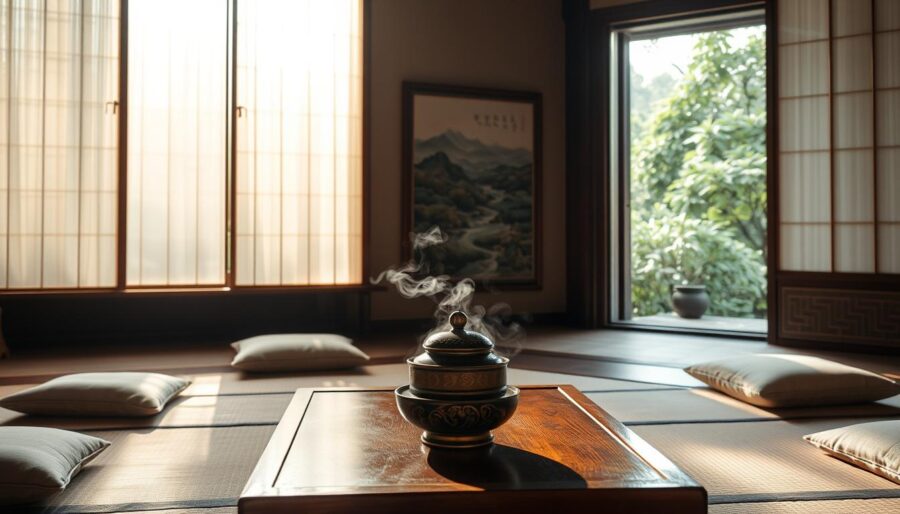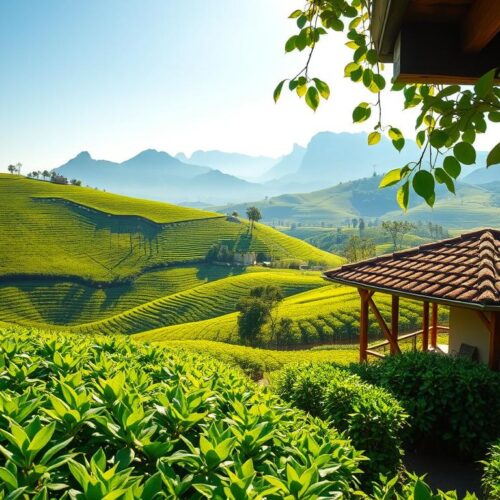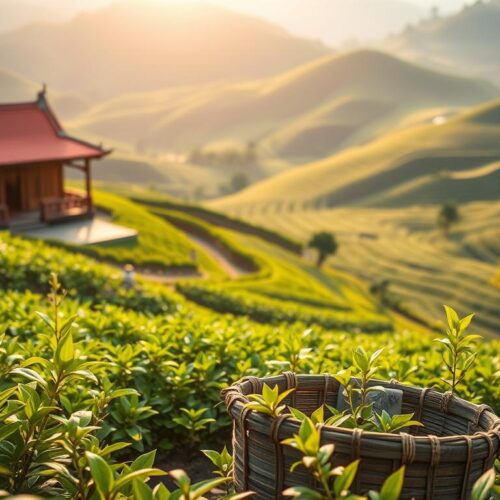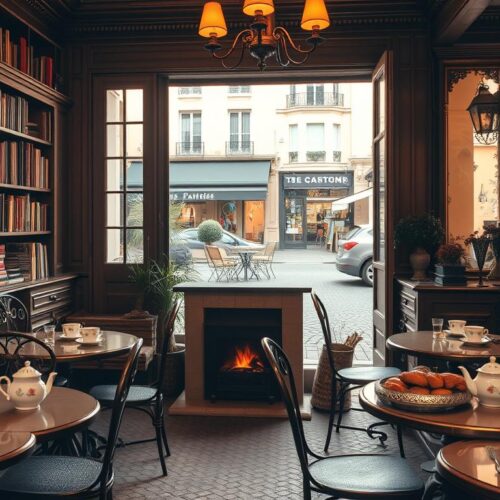Exploring the Korean tea ceremony, or Darye, invites you to a world of peace and mindful attention. This guide shines a light on Korean tea culture’s rich traditions and practices. It doesn’t matter if you’re in a Seoul tea house or any place in South Korea, you’ll find joy in superb tea and deeply connect with a history-rich, harmonious culture.
As you dive deeper, you’ll find the tea ceremony is a beloved ritual, mixing art with spirituality. Taking part in these true experiences helps grow a lasting inner peace.
Understanding the Essence of the Korean Tea Ceremony
The Korean tea ceremony, known as Darye, centers on harmony and respect. This event is a meaningful cultural ritual. It encourages mindfulness and appreciating the moment. Darye, rooted in Zen Buddhism, focuses on being present and enjoying tea drinking.
The use of seasonal teas reflects the changes in nature. Crafted utensils and graceful movements make the tea drinking act meditative. These aspects show tea’s cultural importance, more than just a drink, but a meaningful shared experience.
Learning about this cultural practice increases your respect for Korean traditions. Darye, with its quiet and mindful approach, teaches valuable lessons beyond the tea room.
The Ritual Elements of a Korean Tea Ceremony
The traditional Korean tea ceremony blends ritual elements for a deep experience. It starts with choosing top-notch tea leaves from local farms. This highlights the ceremony’s focus on genuine, traditional tea practices.
Every tea utensil is picked for its quality and function. The teapot and cups must not only work well but look beautiful together. This care in selection shows the value placed on artisan skills. It impacts how the tea tastes.
Participants perform thoughtful gestures during the ceremony. These actions turn the brewing and serving of tea into a calming practice. It helps people feel connected to the tea and each other. This also deepens appreciation for Korea’s tea culture.
In conclusion, the Korean tea ceremony offers a complete experience. Choosing tea leaves and using special utensils both play a big part in honoring this age-old tradition.
Finding Authentic Tea Ceremony Experiences
To dive into real Korean tea ceremonies, look for traditional tea houses in Seoul with hands-on lessons. Places like Heesum Tea Room focus on local tea making and highlight artisan skills. Experts there teach you the importance of each tea, giving insights and making real connections.
Being in a place that’s not just for tourists helps you deeply connect with Korean tea customs. True experiences are more than just about the tea. They include the atmosphere, history, and moments shared with other tea lovers. Talking with experts makes you value this amazing tradition even more.
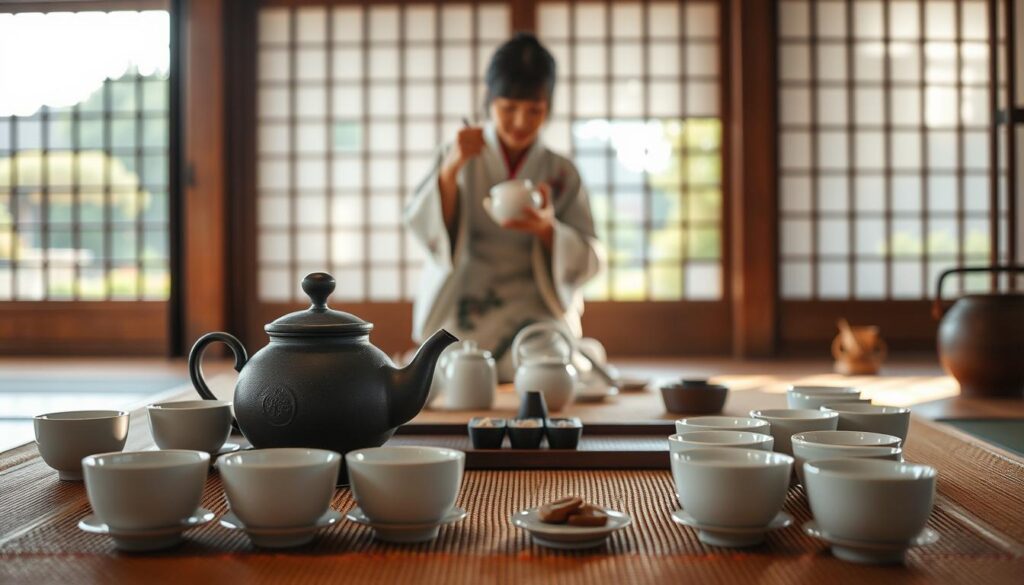
| Venue | Location | Experience Offered | Specialty Tea |
|---|---|---|---|
| Heesum Tea Room | Seoul | Hands-on tea ceremonies | Jiri Mountain Green Tea |
| O’sulloc Tea House | Seoul | Tasting sessions | Jeju Green Tea |
| Tea Therapy | Seoul | Cultural workshops | Herbal Tea Blends |
The Importance of Mindfulness in Tea Drinking
Mindfulness during tea drinking is key in valuing the Korean tea ceremony. It helps you deeply connect with the tea. By taking your time with each step of tea prep, you get to reflect and awaken your senses. The tea’s calming effects turn a simple act into a peaceful ritual.
Preparing tea is a form of meditation itself. Heating the water and steeping the leaves needs your full focus. This process eases stress, giving you peace in today’s busy life. Enjoying the smell and each sip leads to deeper relaxation and self-reflection.
Being mindful while drinking tea turns it into a deep meditation. This approach lets you fully taste and smell the tea. It turns every cup into a chance for deep thought and peace.
How to Prepare for Your Korean Tea Ceremony
Getting ready for a Korean tea ceremony means learning about its traditions. You should understand the rituals to fully enjoy the event. It’s also important to know where to sit, as this shows the relationship between the host and the guests.
Creating a peaceful environment is crucial. This makes the experience more enjoyable for everyone. Even though there isn’t a strict dress code, wearing simple clothes is best. This helps you fit in with the ceremony’s calm feel. It’s also important to come with an open mind. This way, you can truly appreciate the ceremony’s peacefulness.
Here’s what you should keep in mind when getting ready for a tea ceremony:
| Preparation Aspect | Details |
|---|---|
| Seating Arrangements | Understand your position relative to the host, as it signifies respect. |
| Mindset | Arrive with openness, ready to embrace the moments of stillness. |
| Respectful Behavior | Practice patience and attentiveness during the ceremony. |
| Dress Code | Wear unobtrusive clothing that complements the ceremony’s elegance. |
| Engagement | Participate actively but gracefully, contributing to the atmosphere. |
The Health Benefits of Korean Tea
Korean tea, like green tea and herbal blends, has many health benefits. It’s rich in antioxidants. These help strengthen your immune system, which helps prevent diseases and keeps you healthy. Drinking Korean tea regularly also improves digestion, making you feel better overall.
Each tea has its own health perks. Green tea, for example, fights oxidative stress. Barley tea, on the other hand, is good for your digestion. Enjoying a Korean tea ceremony means enjoying both flavor and health benefits. This tradition boosts both your health and your connection to Korean culture.
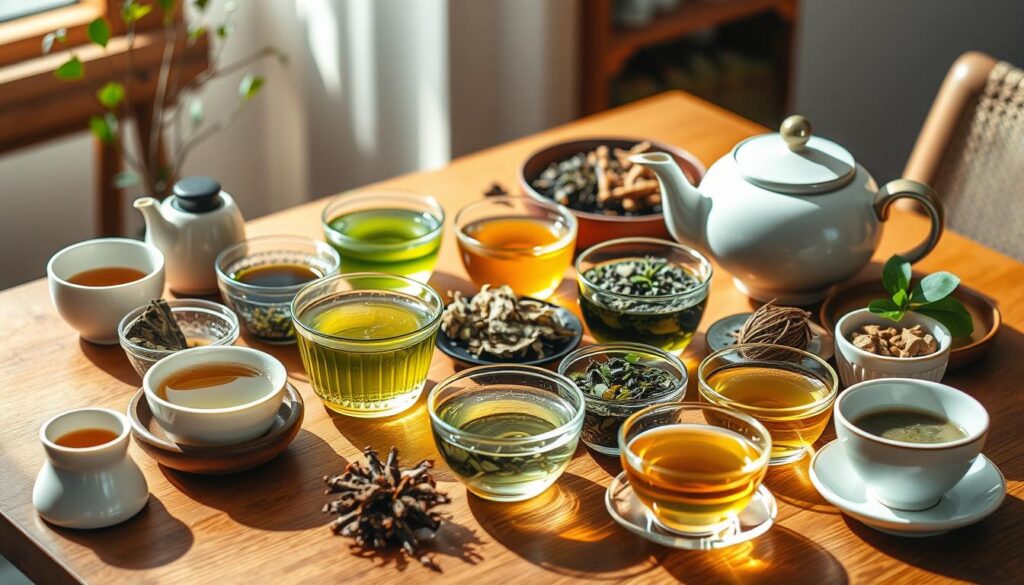
Documenting Your Journey
Recording your experience with the Korean tea ceremony lets you enjoy it even after it’s over. You can write down your thoughts, snap photos of the calm setting, or draw the pretty teaware. Each method captures special memories of your bond with Korean tea culture. Through journaling your travels, you dive deep into the ceremony, sharing your thoughts and feelings.
Think about why taking pictures is powerful. Photos capture the look and mood of the ceremony, bringing back all those calm feelings. When you jot down your feelings and what happened, you turn the ceremony’s essence into a story others can enjoy. Sharing your experiences deepens your grasp of Korean tea culture and motivates others to start their own explorations.
Embracing the Korean Tea Culture Beyond the Ceremony
Enjoying Korean tea culture is more than attending a tea ceremony. By taking part in tea traditions, you get closer to South Korea’s history and tea practices. Visiting tea farms can show how tea is made and picked. This can make you appreciate the work behind tea making more.
Going to tea festivals lets you see the community’s spirit. At these events, you can watch how traditional tea is brewed, try different teas, and learn how to make dasik, a sweet treat. These festivals bring you closer to the art of tea and its role in bringing people together.
Meeting local people enhances your experience. Joining them for tea shows the kindness and hospitality they share. This deep dive into tea culture makes your trip more meaningful and memorable.
Reflection: The Impact of the Tea Ceremony on Travel
Joining a Korean tea ceremony deeply enhances your travel. It opens a window to South Korea’s culture, highlighting the role of mindfulness today. You do more than just drink tea; you connect with the traditions that define local life.
This ceremony lets you connect deeply with your surroundings. Every sip makes you think about the cultural significance of the practice. It teaches you to value history and traditions, making your travel more meaningful.
By stepping into the calm of the Korean tea ceremony, your travel becomes a path to self-discovery. This quiet practice teaches you to engage fully with the world around you. Your journey becomes not just a visit, but a deep connection, making every moment special.

